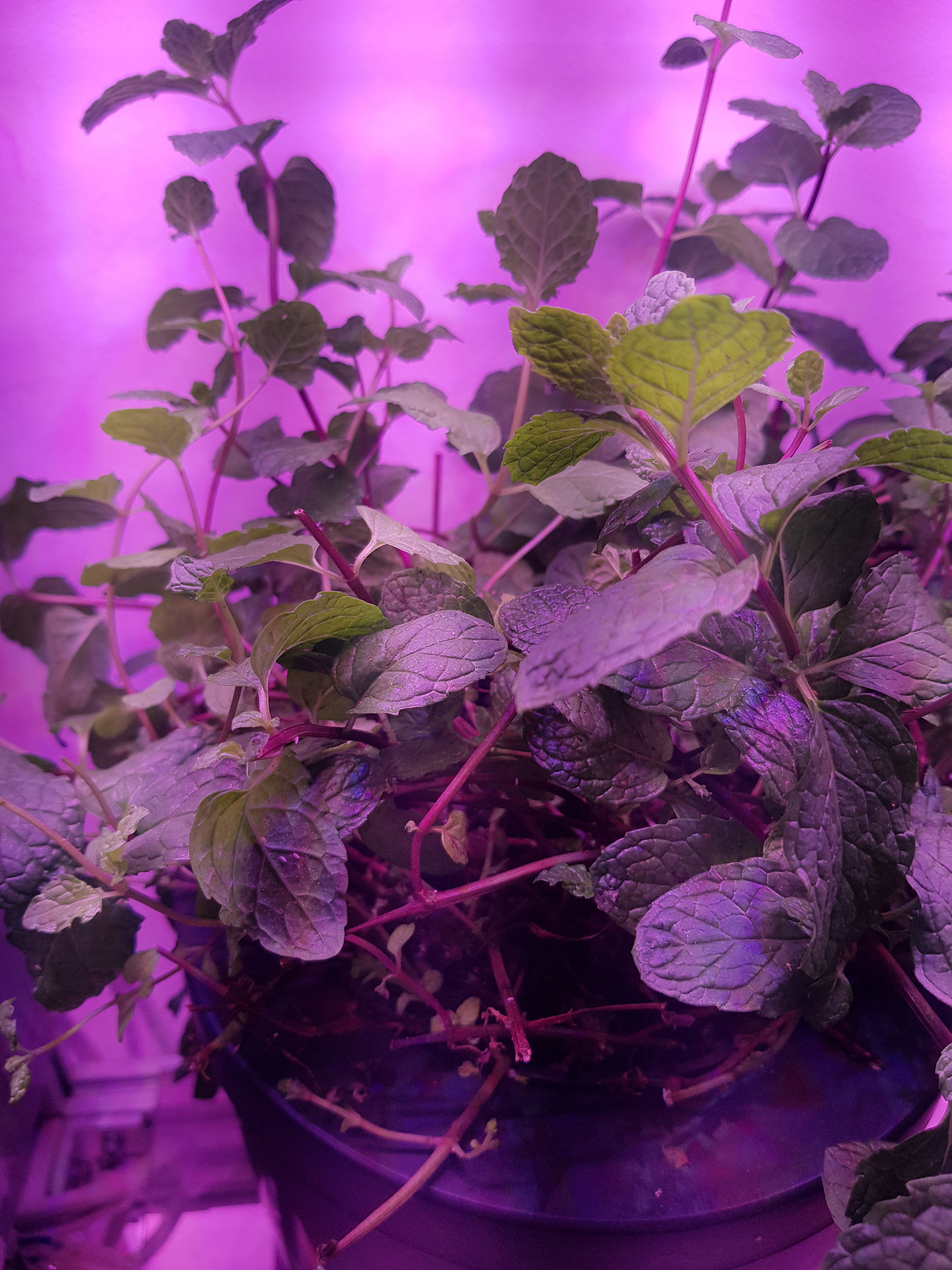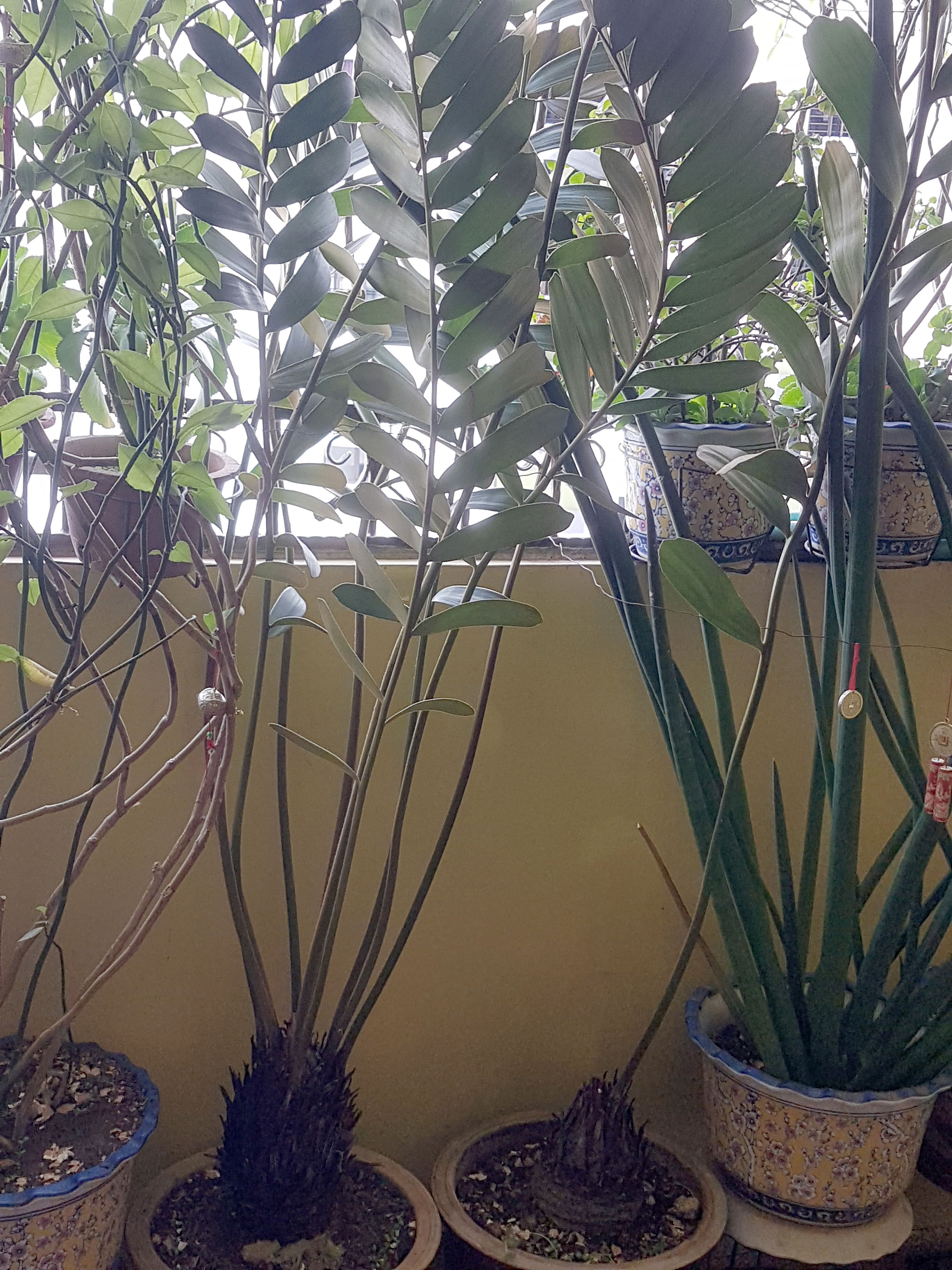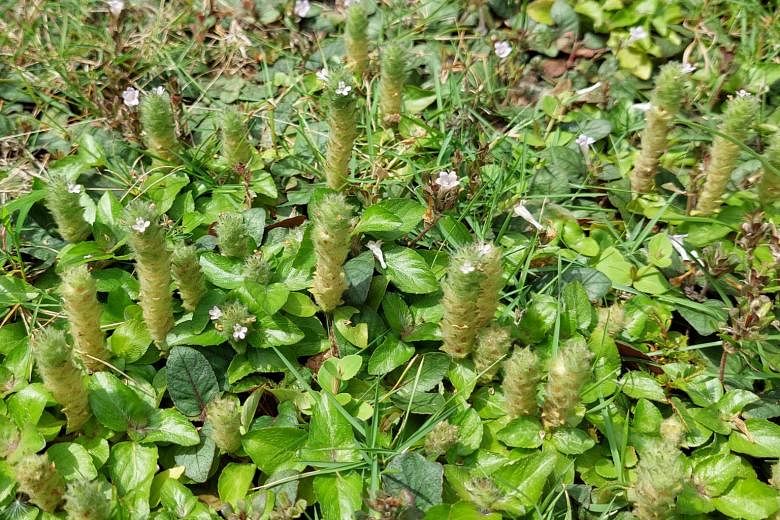Blue Pussy Leaf is groundcover for shady areas
What is the name of this plant in the corner of my garden?
Dave Choy
This plant sometimes occurs as a garden weed. It is commonly known as the Blue Pussy Leaf (botanical name: Nelsonia canescens). It is shade-tolerant and makes a good groundcover plant for shady areas outdoors. It produces upright inflorescences that are soft and furry.
Pachira species sold as lucky festive plant

What plant is this? Its leaves are like fingers and its flowers last only two to three days, but the fruit lasts longer. Is the fruit edible?
Shirley Toh
The plant is a Pachira species. In Singapore, the most common species is known as Guiana Chestnut, Shaving-brush Tree and Fortune Tree (botanical name: Pachira aquatica). It was once sold as a festive plant for Chinese New Year, where several plants are braided together to form a single potted specimen for display. It is now a common foliage plant sold in local nurseries.
The seeds can be toasted and made into a chocolate-like beverage or into flour to make bread. Its flowers and young leaves can be cooked and eaten.
Effective Whitefly control

How do I treat my basil plant's whitefly problem?
Adrian Ling
Your plant is a spearmint (botanical name: Mentha spicata) and not basil.
Whiteflies are common sap-sucking pests that weaken plants over time and spread viral diseases.
For edible plants, systemic pesticides are not recommended. Contact pesticides should be used, but their efficacy will require diligence on a gardener's part. You can use castile soap that contains essential oils, like lavender or orange oil. Castile soap suffocates the pests and they are not likely to develop resistance to this mode of pesticide action. Essential oils in the soap can also repel the flying adults.
Whiteflies multiply very quickly, so you should check regularly and take swift action. Thorough pesticide application that covers the plant, including the undersides of the leaves, is essential. Spray the pesticide at night when pests are less active and apply repeatedly over several days in case of a severe infestation.
However, to avoid burning the plant, test the soap concentration on a small part of the plant before spraying it entirely.
Cardboard Palm is a fuss-free cycad species

My plant is similar to the Cardboard Palm (Zamia furfuracea). Some of its stems are about 2.7m tall. Are these plants rare in Singapore?
Chua Joon Yong
Your plant is indeed the Cardboard Palm (Zamia furfuracea). It is not rare as a cycad species, but it is not commonly planted here now. The good thing about this species is that its young leaves are not food for the cycad blue butterfly caterpillars, so it is a fuss-free choice for gardens.
The leaf stalks seem stretched and this is likely due to a lack of light for the portions growing behind the corridor or balcony parapet. When grown in exposed areas with direct sunlight, plants tend to adopt a more compact growth habit.
Move ficus into shade, acclimatise it slowly

My ficus was accidentally left in the hot sun for a short while about two weeks ago and some leaves were burnt. Why have some of the healthier leaves started showing dried-out patches too? How do I save my plant? Also, can it be propagated?
Peter Ang
The leaves of your Rubber Plant (Ficus elastica) are sunburnt and the burnt portions will not recover. Let the new leaves take over.
A plant is sunburnt when it is grown in the shade - either in the home or nurtured in a production nursery - and suddenly moved to a sunnier spot, which will result in leaf tissues being injured by the more intense sun rays.
This species can grow under direct sunlight, as can be seen in specimens in Singapore's parks and gardens. But for home gardeners, the moving of the plant to under direct sunlight needs to be done slowly so that it can adapt to higher light levels. A plant can be moved and exposed to more intense light in stages over several weeks.
The Rubber Plant can be slow to root from stem cuttings. The most commonly used propagation method is air-layering, where woody plants allow branches to be rooted while still attached to the parent plant.
- Answers by Dr Wilson Wong, an NParks-certified practising horticulturist, parks manager and ISA-certified arborist. He is the founder of Green Culture Singapore and an adjunct assistant professor (Food Science & Technology) at the National University of Singapore.
- Have a gardening query? E-mail it with clear, high-resolution pictures of at least 1MB, if any, and your full name to stlife@sph.com.sg. We reserve the right to edit and reject questions.

